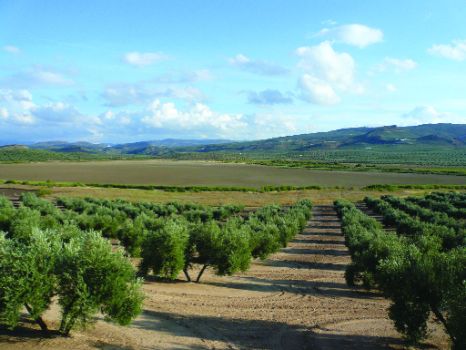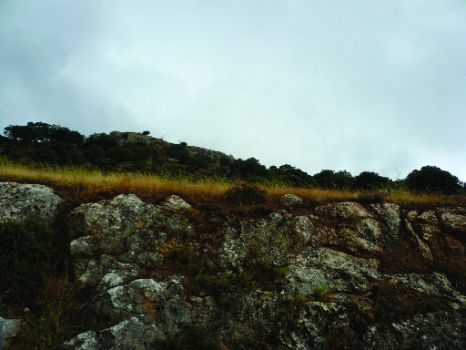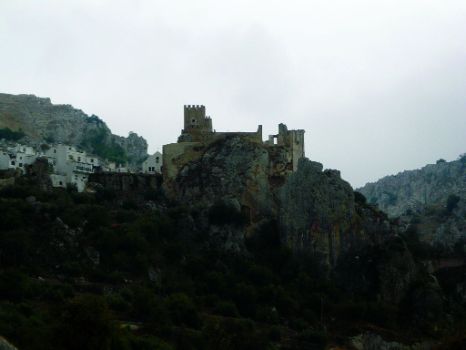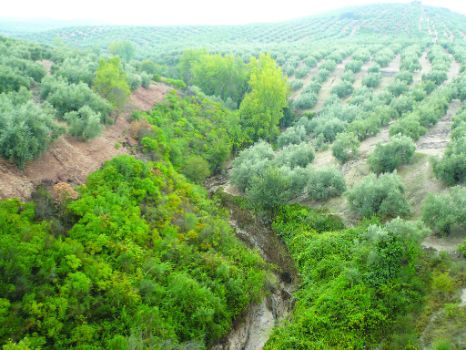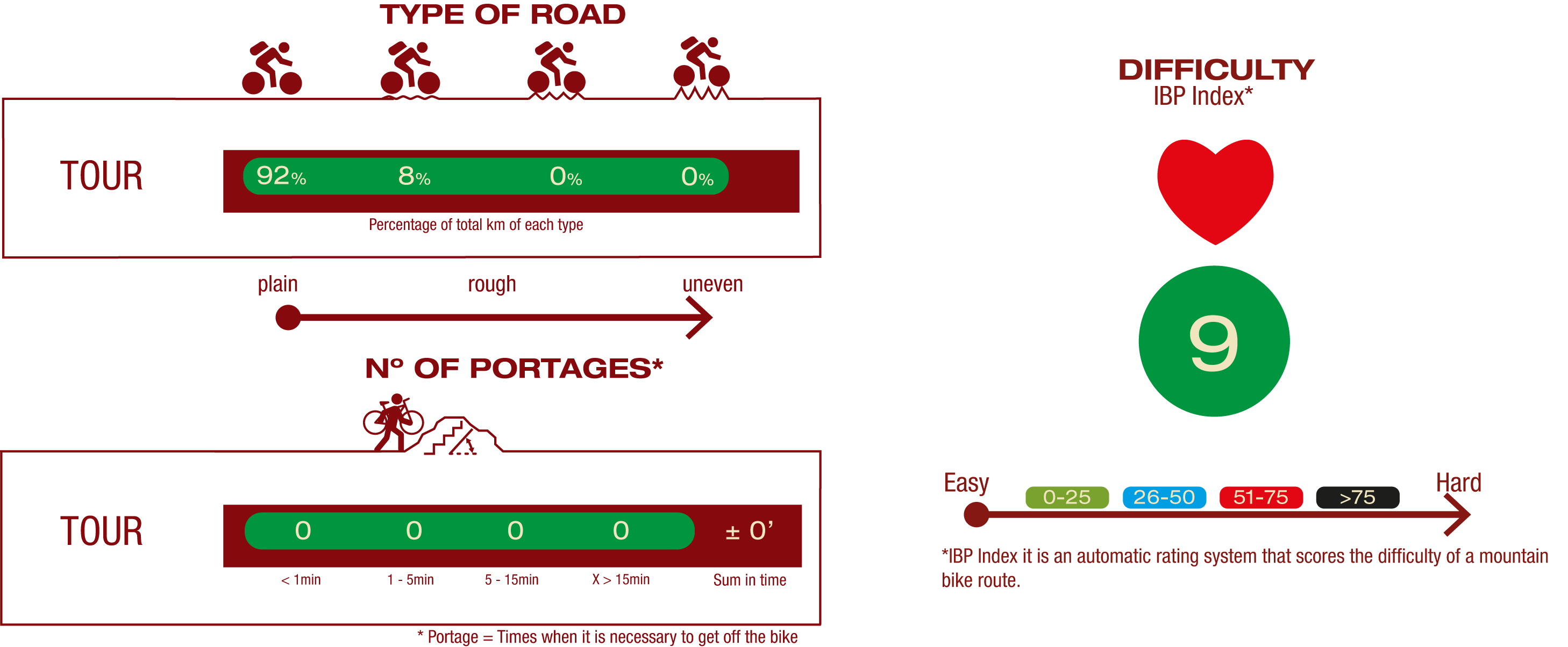Net of Natural
Trails

Subbética Section
Description
Lakes, canyons and caves amidst olive groves
This Trail follows the route of the old "Oil Train" that begun in Jaén, traversed part of the province of Cordoba, and ended in Málaga. The train, which transported typical local products, especially olive oil, travelled through the same landscape, dominated by olive groves, that still exists today.

This route starts at the River Guadajoz Viaduct, near the town of Luque (Cordoba), a place that can only be accessed from the Nature Trail. The remains of a railway stop still stand at the beginning of the route. Further on is the Laguna del Conde Nature Reserve, otherwise known as Salobral Nature Reserve. The lagoon, which can be seen from the Trail, is a shallow, seasonal karst wetland that is part of the larger wetland known as “Lagunas del Sur de Cordoba”. Given the growing interest in nature observation, an observatory has been built for watching the myriad bird species that inhabit the lagoon, including mallards (Anas platyrhynchos), northern shovelers (Anas clypeata) red-crested pochards (Netta rufina), common coots (Fulica atra), cormorants (Phalacrocorax carbo), and even flamingos(Phoenicopterus roseus), which consider these brackish waters as their ideal habitat.
The newly renovated train station at Luque has been transformed into a bar-restaurant where it is possible to have a rest. After this former station, another Greenway can be taken, which leads to Baena (8 km). This town is nestled in the Sierras Subbéticas Nature Park and Global Geopark, a unique environment worth visiting not only for its cultural wealth, but also for the beauty and diversity of its landscape, strewn with geological formations whimsically shaped by water, and valleys dotted with rocky outcrops, depressions, poljes and caves.

This area provides a favourable nesting environment for many bird species, in particular raptors like golden eagles (Aquila chrysaetos) and peregrine falcons (Falco peregrinus), as well as noisy red-billed choughs (Pyrrhocorax pyrrhocorax) and crows (Corvus corax), who can be seen flying over most of the rest of the Nature Trail. The route continues from Luque to Carcabuey, through a cliff area known as the "Ruta de las Buitreras" (18 km) owing to the large wake of griffon vultures (Gyps fulvus)that nest there.
A tourism information kiosk can be found shortly before arriving at Zuheros, crowned by its Moorish castle.
The next stop on the route is Zuheros station, from where it is possible to visit the Cueva de los Murciélagos, a natural monument of great historical and geological value. The streets and squares of the town, designated a Site of Cultural Interest, are also worth visiting.
Several paths start from Zuheros into the Subbética Nature Park, including the River Bailón Path, one of the most attractive, rich in landscape and biodiversity. Soon after Zuheros, a bridge of great historic value crosses over a river. Although olive trees dominate the landscape, the route sometimes traverses through dense Mediterranean oak and carob woodlands, over which loom mountain ridges, where no olive groves can grow.

Further down the path is Doña Mencia station, also converted into a restaurant. The town sits on one side of the route but there are some activities in the town worth the visit: its renowned wineyards of Montilla-Moriles wine or renting a bicycle just near the Greenway in Subbética’s bike touring Centre located in a former hangar. The town also has a caravan parking lot. New footpaths branch off from the Trail into the very heart of the Nature Park. Past the station, the route crosses the only tunnel on the Trail and a few viaducts, including the Sima Viaduct, where extreme sports are practiced.
After winding through olive groves, clearings and Mediterranean shrubland, the route reaches the town of Cabra. The local railway station marks the beginning of the Sima de Cabra Route. The station turned restaurant also houses the Olive Oil Train Interpretation Centre, where the history of this Nature Trail, its towns and natural environment are narrated and interpreted.
Past Cabra, the route moves on to Lucena. Its railway station has been converted into a Crafts and Traditions Interpretation Centre, where the traditions and crafts that made this town famous are shown, including pottery, silverwork, bronze work and wood work, as well as its oil culture, folklore and feasts.
There is also a Museum of Vintage Cars at the station, next to the restaurant.
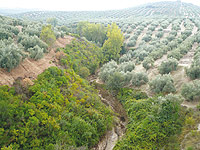
Further along the Trail, the terrain is no longer quite as steep. There are increasingly less olive groves and more vineyards, from which one of Cordoba’s flagship products, the Moriles-Montilla wine, is made.
The route reaches Moriles-Horcajo, the last station on the Trail, which provides service to Las Navas Sepillar, a hamlet of Lucena. From here, the Trail continues another four kilometres, through olive groves and vineyards, to Lucena.
As already stated, the Subbética Nature Trail links with many routes and leads to two protected areas, Laguna del Conde and Sierras Subbéticas Nature Park, enabling the traveller to enjoy the experience on foot, by bike, or even by car. As with the Aceite Greenway Nature Trail, additional trips, be it historical or cultural, may be enjoyed from the different towns that dot this Trail, including the Caliphate Route (Luque), or the Moriles Wine Route (Lucena).
Managing Entities
Sites of interest
Puntos de interés
Culture
- Casilla de obrero
- Casilla de la Cañada del Pastor
- Casilla de obrero
- Estación de Navas del Selpillar
- Ermita de Nuestra Señora de la Sierra
- Búnker
- Estación de Cabra
- Estación de Luque
- Estación de Lucena
- Casilla del guardabarrera
- Casilla de guardabarrera
- Cueva de los Murciélagos
- Estación de Doña Mencía
Geology
Hydrography
- Arroyo de la Alameda
- Arroyo de Moriles
- Laguna del Salobral
- Fuente de Luque
- Laguna del Rincón
- Sima de la Cabra
- Cañón del río Bailón
- Arroyo de la Huerta de Oliva
- Fuente del Río
- Fuente de las Piedras
- Laguna Honda
Information
- Final del Camino Natural
- Parque Natural Sierras Subbéticas
- Parque Nacional de Sierra Nevada
- Oficina de Turismo de Cabra
- Oficina de Turismo de Luque
- Edificio de Usos Múltiples
- Albergue Estación Vía Verde de Cabra
- Oficina de Turismo de Doña Mencía
- Punto de Información de la Estación de la Vía Verde en Doña Mencía
- Oficina de Turismo de Zuheros
- Oficina de Turismo de Lucena
Infrastructure
- Viaducto de la Sima
- Viaducto de Zuheros
- Viaducto del río Guadajoz
- Túnel del Plantío
- Viaducto del Alamedal
- Viaducto de Dientes de la Vieja
Municipality
Hostel
Vegetation
Profile

(Calculated according to the MIDE criteria for an average excursionist with a light load)
Highlights
Further information
Geology, History and Nature: La Cueva de los Murciélagos (The Bat Cave)
The Subbaetic Range is predominantly limestone rock. Countless geological formations of great value like caves have formed where water has cut into the limestone. The Cueva de los Murciélagos at Zuheros, a must-see town through which the Trail passes, is one of the most important of such formations. This large cavity was formed when a large block of rock collapsed, resulting in a fissure through which water flowed, creating underground lakes and amazing limestone structures such as stalagmites and stalactites.
However, this site is interesting not only for its geological beauty, but also for its outstanding Neolithic site with a burial.
The cave was originally inhabited by Neanderthals, and later, by the first human inhabitants in the area. This is evidenced by flint heads, pottery fragments and bone tools, as well as personal ornaments, remains of food and various paintings of animals, such as horses, goats and deer, found in cave.
Although the cave is 2 kilometres long, only 450 metres are open to visitors. It is currently a shelter for a large flock of bats. There is an Eco-museum near the cave that is also worth visiting.
Multimedia
Downloads
GPS Downloads
Documents
Cyclability
This cycling stage corresponds from Doña Mencía Station to Campo Real Station.
GENERAL RECOMMENDATIONS
- Find out about the technical aspects of the route and the weather on the day.
- Take care of the environment. Take care not to disturb animals or damage vegetation. Respect private areas.
- You must give priority to pedestrians and comply with general traffic rules.
- The environment in which you will be riding is open, free to move around and an area where many activities are carried out (sporting, forestry, livestock and agricultural activities).
- Always have an understanding, prudent, responsible and respectful attitude.



